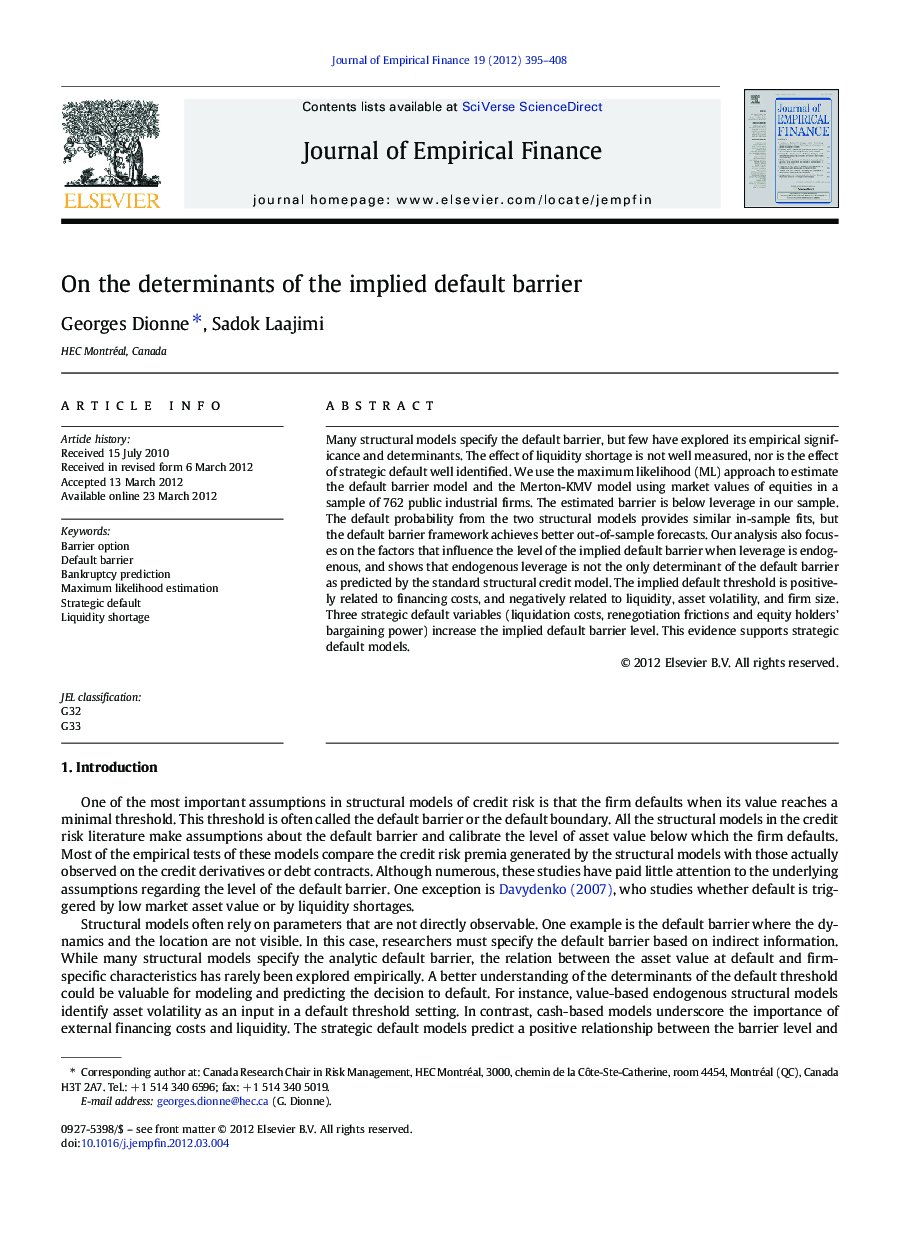| کد مقاله | کد نشریه | سال انتشار | مقاله انگلیسی | نسخه تمام متن |
|---|---|---|---|---|
| 958269 | 928965 | 2012 | 14 صفحه PDF | دانلود رایگان |

Many structural models specify the default barrier, but few have explored its empirical significance and determinants. The effect of liquidity shortage is not well measured, nor is the effect of strategic default well identified. We use the maximum likelihood (ML) approach to estimate the default barrier model and the Merton-KMV model using market values of equities in a sample of 762 public industrial firms. The estimated barrier is below leverage in our sample. The default probability from the two structural models provides similar in-sample fits, but the default barrier framework achieves better out-of-sample forecasts. Our analysis also focuses on the factors that influence the level of the implied default barrier when leverage is endogenous, and shows that endogenous leverage is not the only determinant of the default barrier as predicted by the standard structural credit model. The implied default threshold is positively related to financing costs, and negatively related to liquidity, asset volatility, and firm size. Three strategic default variables (liquidation costs, renegotiation frictions and equity holders’ bargaining power) increase the implied default barrier level. This evidence supports strategic default models.
► Use the maximum likelihood approach to estimate the default barrier model and the Merton-KMV model.
► Estimated barrier is below leverage in our sample.
► Default barrier framework achieves better out-of-sample forecasts.
► Implied default threshold is related to financing costs, liquidity, asset volatility, firm size.
► Empirical evidence also supports strategic default models.
Journal: Journal of Empirical Finance - Volume 19, Issue 3, June 2012, Pages 395–408